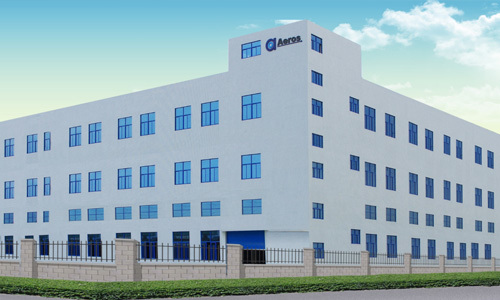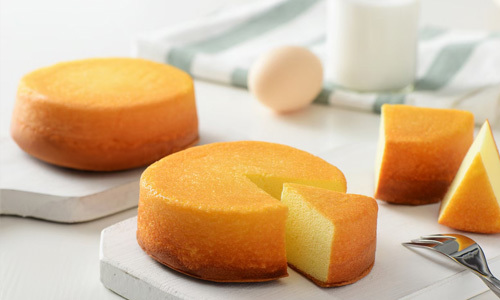Revolutionizing Cake Production: The Ultimate Aerating Machine Guide

2024/10/17
Revolutionizing Cake Production: The Ultimate Aerating Machine Guide
Table of Contents
- Introduction to Aerating Machines in Cake Production
- The Importance of Aeration in Cake Making
- Types of Aerating Machines Available
- Benefits of Using Aerating Machines
- Choosing the Right Aerating Machine for Your Bakery
- Operating Your Aerating Machine Effectively
- Troubleshooting Common Aerating Machine Issues
- The Future of Cake Production: Innovations in Aeration Technology
- Conclusion
- FAQs
Introduction to Aerating Machines in Cake Production
In the fast-evolving landscape of the food and beverage industry, aerating machines have emerged as game-changers in cake production. These specialized machines allow bakers to efficiently whip, blend, and aerate ingredients, resulting in lighter, fluffier cakes with improved texture and flavor. As consumer demands for high-quality baked goods rise, investing in an aerating machine can significantly enhance production capabilities and product quality.
The Importance of Aeration in Cake Making
Aeration plays a crucial role in cake making, impacting everything from volume to texture. When ingredients like flour, sugar, and eggs are aerated, they trap air bubbles that expand during baking, causing the cake to rise. Proper aeration not only contributes to the cake's structure but also affects its overall taste and moistness. Understanding the importance of aeration can help bakers create masterpieces that delight customers and keep them coming back for more.
Aeration Fundamentals
Aeration is the process of incorporating air into batter or dough. This can be achieved through various methods such as whisking, beating, or using specialized machines. The goal is to create a light and airy mixture that results in a tender cake. Factors like ingredient temperature, mixing speed, and duration of aeration all contribute to the final outcome.
Types of Aerating Machines Available
Aerating machines come in various forms, each designed to meet specific production needs. Understanding the different types can help bakeries choose the best option for their operations.
Mechanical Aerating Machines
Mechanical aerating machines typically use rotating blades or beaters to mix ingredients. They are widely used for their versatility and efficiency, making them suitable for both small and large-scale operations. These machines can handle a variety of batters, from light sponge cakes to denser mixes.
Pneumatic Aerating Machines
Pneumatic aerating machines utilize air pressure to aerate mixtures. This technology allows for even distribution of air throughout the batter, producing consistent results. Pneumatic systems are particularly beneficial for high-volume production, as they can aerate large batches quickly and efficiently.
Combination Aerating Systems
Combination aerating systems incorporate both mechanical and pneumatic methods to achieve optimal aeration levels. These machines offer the flexibility to adjust aeration techniques based on the specific requirements of different recipes, making them a valuable investment for diverse baking operations.
Benefits of Using Aerating Machines
Investing in an aerating machine can yield numerous advantages for cake production. Here are some compelling benefits:
Enhanced Consistency
Aerating machines provide uniform mixing, ensuring that every batch of batter has the same texture and aeration level. This consistency is crucial for maintaining brand reputation and meeting customer expectations.
Increased Efficiency
Automating the aeration process significantly reduces mixing time, allowing bakers to focus on other essential tasks. This efficiency leads to increased productivity, ultimately boosting profits.
Improved Quality
Using an aerating machine can enhance the overall quality of cakes. With precise control over aeration levels, bakers can achieve the perfect rise and texture, resulting in cakes that are both visually appealing and delicious.
Labor Savings
By automating the aeration process, bakeries can reduce labor costs associated with manual mixing. This shift not only cuts expenses but also minimizes the risk of human error, ensuring a more reliable production process.
Choosing the Right Aerating Machine for Your Bakery
Selecting the ideal aerating machine involves assessing your bakery's specific needs and production goals. Here are some factors to consider:
Production Volume
Evaluate your expected production volume to determine the appropriate size and capacity of the aerating machine. Larger operations may benefit from high-capacity pneumatic machines, while smaller bakeries might find mechanical machines more suitable.
Type of Cakes Produced
Consider the types of cakes you specialize in. If your bakery focuses on delicate sponge cakes, a machine that allows for gentle aeration may be necessary. Conversely, if you're producing denser cakes, a more robust system may be required.
Budget Constraints
Aerating machines can vary significantly in price. Establish a budget and research machines within that range while considering the long-term benefits and potential return on investment.
Space Availability
Assess your bakery's layout and available space for equipment. Aerating machines come in various sizes, so it's important to choose one that fits your production area without compromising efficiency.
Operating Your Aerating Machine Effectively
Once you've selected the right aerating machine, proper operation is key to achieving the best results. Here are some tips for effective use:
Pre-Operation Checks
Before using the machine, perform routine maintenance checks to ensure everything is functioning correctly. This includes inspecting components, checking for wear and tear, and ensuring the machine is clean.
Ingredient Preparation
Prepare ingredients according to recipe specifications. Using room temperature ingredients can enhance the aeration process, yielding better results.
Monitoring Aeration Levels
Pay close attention to aeration levels during operation. Adjust mixing times and speeds as needed to ensure optimal aeration without overmixing, which can negatively affect cake texture.
Troubleshooting Common Aerating Machine Issues
Even the best aerating machines can encounter issues. Here are some common problems and their solutions:
Inconsistent Aeration
If your cakes are not rising as expected, check the machine's settings and ensure that the ingredients are properly mixed. Adjusting the mixing time or speed may resolve the issue.
Over-Aeration
Over-aeration can lead to cakes that are too airy and crumbly. Monitor the mixing process closely, and consider reducing the aeration time for future batches.
Mechanical Failures
If the machine malfunctions, consult the manufacturer’s manual for troubleshooting guidance. Regular maintenance can help prevent mechanical failures from occurring in the first place.
The Future of Cake Production: Innovations in Aeration Technology
As the food and beverage industry continues to innovate, the technologies used in aerating machines are evolving. Expect advancements in automation, smart systems, and energy efficiency, which will further enhance cake production capabilities. Staying informed about these trends will help bakeries maintain a competitive edge in the market.
Conclusion
Investing in an aerating machine is a pivotal step in revolutionizing cake production. By understanding the various types of machines, their benefits, and how to operate them effectively, bakeries can elevate their cake-making processes to new heights. As technology advances, those who embrace these innovations will undoubtedly reap the rewards in quality, efficiency, and customer satisfaction.
FAQs
1. What types of cakes benefit most from aerating machines?
Aerating machines are particularly beneficial for sponge cakes, chiffon cakes, and any recipe that requires a light, fluffy texture.
2. Can aerating machines handle different batch sizes?
Yes, many aerating machines are designed to accommodate various batch sizes, but it's essential to select a machine that matches your production volume.
3. How often should I maintain my aerating machine?
Regular maintenance should occur based on the manufacturer's recommendations, typically every few months or after a set number of operational hours.
4. Can I use my aerating machine for other applications beyond cakes?
Many aerating machines can be versatile enough to handle other baking applications, such as whipped creams and mousses, depending on their design.
5. What is the average lifespan of an aerating machine?
The lifespan of an aerating machine can vary significantly based on usage, maintenance, and model. Generally, well-maintained machines can last for many years.
Cake continuous aerating machine
Previous Page







